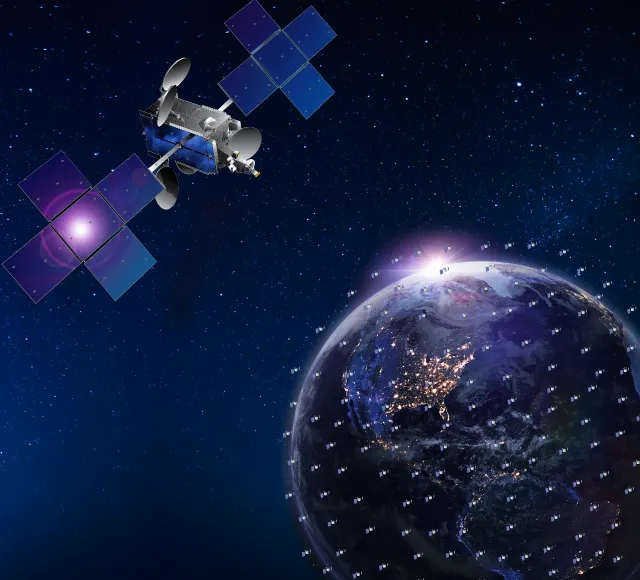
Eutelsat's history
1977
The creation of Eutelsat international organisation marks the beginning of Europe’s satellite communications services industry.
1983
The satellite television business begins with the first transmission of a satellite TV signal on a commercial European satellite. The first analogue channels quickly take advantage of this new opportunity to broadcast to consumers equipped with first-generation reception equipment.
1995
Eutelsat successfully develops the HOTBIRD constellation of high-power satellites at 13° East, enabling hundreds of television channels to be broadcast to millions of homes via cable networks and Direct-to-Home antennas. The earth-brightness-temperature model is developed to estimate uplink performance. Viacom launches the first commercial TV platform in DVB-MPEG.
2000
Launch of the first satellite with electrical propulsion for station-keeping (EUTELSAT 16C). Maiden Atlas III rocket takes EUTELSAT 36A into space. Europe’s first consumer internet service is launched using satellite for downloads.
2001
With the liberalisation of the telecoms sector, Eutelsat is transformed into a private company in July 2001.
2005
Eutelsat goes public in 2005, listing on the French Stock Exchange. Eutelsat’s activities diversify rapidly in the 2000s to include internet and government services.
2009
EUTELSAT 36B satellite carries the first on-board multiplexing capability to increase uplink service area.
FRANSAT, a service operated on Eutelsat’s ATLANTIC BIRD 3 satellite, is launched, giving satellite access in metropolitan France to all French free DTT channels.
2010
KA-SAT, Europe’s first High Throughput Satellite and the highest capacity commercial satellite ever built, goes into space.
2012
OneWeb is founded with the idea of providing low-latency alternatives to terrestrial options.
2014
Eutelsat steps up Ultra HD activity, launching Europe’s first demo channel encoded in HEVC (High Efficiency Video Coding), broadcasting at 50 fps with 10-bit colour depth (one billion colours – HEVC Main 10 profile).
2019
The first six LEO satellites are launched and a joint venture between OneWeb and Airbus is formed, named OneWeb Satellites – including an innovative new manufacturing facility capable of building 15 satellites a week. The first high-volume satellite production factory is built in Toulouse, France then a second factory is built in Florida, USA, close to Space Coast launch facilities.
2020
The British government and Bharti Global provide $1 billion of new funding to OneWeb, securing the finances necessary to build out the rest of the constellation.
2021
OneWeb starts its first services to everywhere north of the 50th Parallel, the same year that Eutelsat QUANTUM, the first commercial Software Defined Satellite (SDS) is launched. Reprogrammable in orbit, flexible in coverage, power and spectrum reconfiguration, QUANTUM marks a new era of GEO satellites. Eutelsat ADVANCE, an end-to-end managed connectivity service is also brought to market.
2022
Eutelsat and OneWeb aim to create a leading global player in Connectivity in an all-share transaction. The transaction is completed after a period of deepening collaboration between the companies, starting with Eutelsat’s acquisition of an equity stake in OneWeb in April 2021.
2023
In the same year that OneWeb Launch #18 completes global coverage of the LEO constellation, the merger between Eutelsat and OneWeb is finalised, combining the high-throughput fleet of Eutelsat’s geostationary (GEO) satellites with OneWeb's constellation of low Earth orbit (LEO) satellites to deliver ubiquitous connectivity.
2025
Eutelsat announces a €1.5 billion Reserved Capital increase and Rights Issue, expected to be completed by the end of 2025 with support from the French and United Kingdom governments.